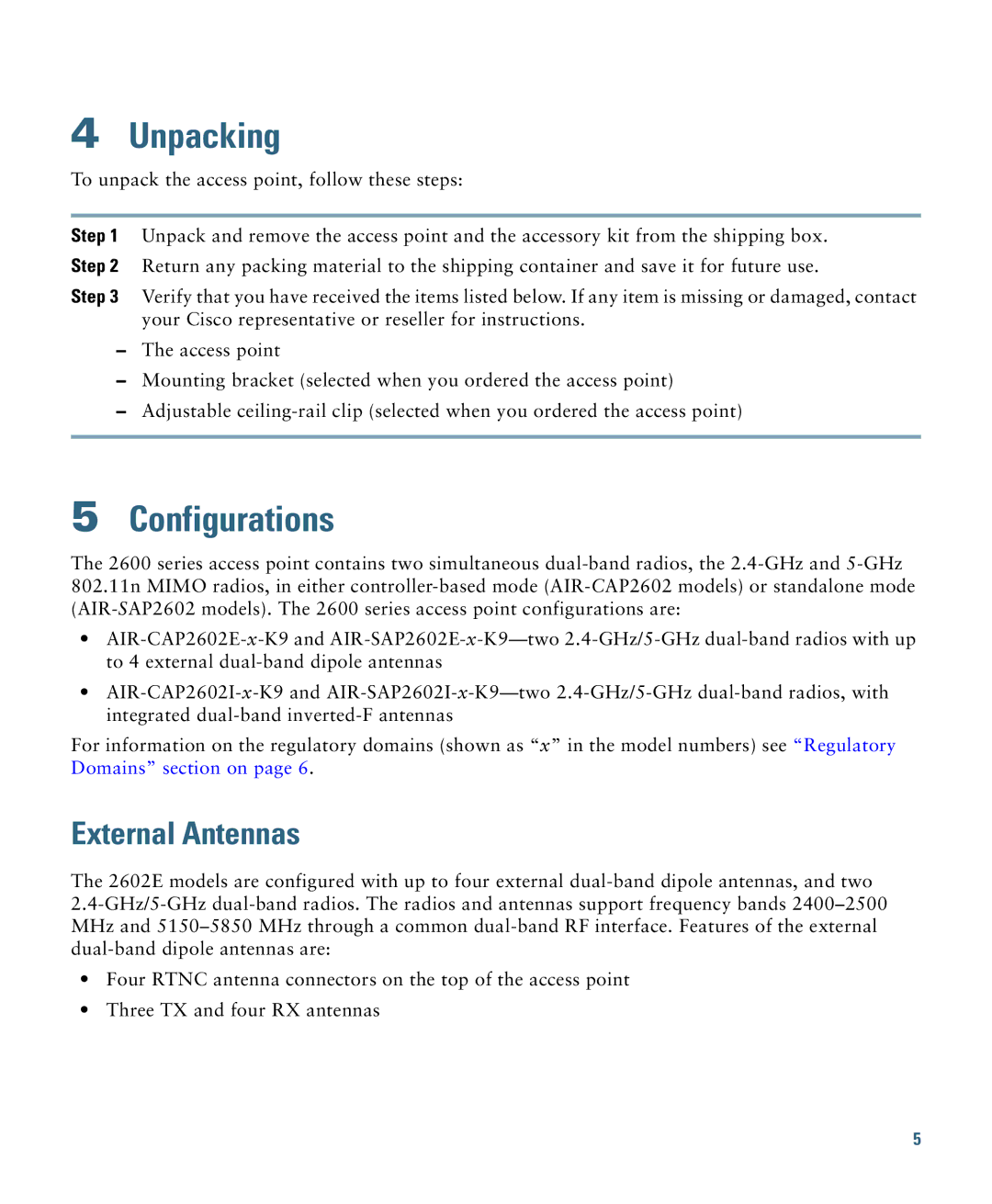
4Unpacking
To unpack the access point, follow these steps:
Step 1 Unpack and remove the access point and the accessory kit from the shipping box.
Step 2 Return any packing material to the shipping container and save it for future use.
Step 3 Verify that you have received the items listed below. If any item is missing or damaged, contact your Cisco representative or reseller for instructions.
–The access point
–Mounting bracket (selected when you ordered the access point)
–Adjustable
5Configurations
The 2600 series access point contains two simultaneous
•
•
For information on the regulatory domains (shown as “x” in the model numbers) see “Regulatory Domains” section on page 6.
External Antennas
The 2602E models are configured with up to four external
•Four RTNC antenna connectors on the top of the access point
•Three TX and four RX antennas
5
